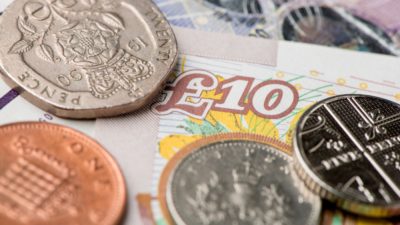Buying dividend stocks is my favourite way to earn passive income. Although they might not be as glamorous as growth stocks, they’re often less volatile and the regular cash payouts are certainly appealing.
So, if I wanted to target a £30k annual income starting at 30, how would I approach this goal?
Here are five simple steps I’d follow.
1. Open an ISA
First, I need to decide what investment vehicle to use. A Stocks and Shares ISA is an attractive option because capital gains and dividends within the ISA wrapper are tax-free.
With a £20k limit for my contributions each tax year, I could build my stock market portfolio over time and eventually earn a sizeable second income without paying a penny to HMRC!
Of course, the rules could change in the future, but their favourable tax status hasn’t been altered since ISAs were introduced in 1999.
Please note that tax treatment depends on the individual circumstances of each client and may be subject to change in future. The content in this article is provided for information purposes only. It is not intended to be, neither does it constitute, any form of tax advice. Readers are responsible for carrying out their own due diligence and for obtaining professional advice before making any investment decisions.
2. Start saving
Second, to realise my ambition of generating a healthy passive income stream, I need money to invest.
I’d like to open up the possibility of early retirement, even with nothing in the bank at 30. That means I’d set an aggressive daily savings goal of £25.
That’s easier said than done in an inflationary environment, but it’s not impossible with a good salary and a disciplined approach. Plus, I could extend my time horizon, which would require a smaller regular savings target.
3. Buy dividend shares
Third, it’s time to buy dividend stocks. Diversification is important to ensure I’m not overly reliant on any single company’s dividend distributions.
Accordingly, I’d spread my investments across a range of firms, geographies, and sectors. For example, my portfolio has exposure to pharmaceuticals, defence, and groceries, among other industries.
Some dividend shares I own currently include:
- AstraZeneca — 2.0% yield
- Lockheed Martin — 2.6% yield
- Tesco — 4.1% yield
4. Reinvest dividends
Fourth, I need to decide what to do with the dividends. Rather than spend the cash (tempting as that may be), I’d reinvest it into more stocks.
I’d target a 4% average yield across my portfolio. That’s marginally higher than the FTSE 100‘s current 3.75% yield, so I think it’s achievable with sensible stock picks. I’d need a portfolio worth £750k to earn £30k in annual dividends.
Combining capital gains with dividend reinvestments, let’s assume my portfolio grew at a compound annual growth rate of 8%, which is broadly in line with the stock market’s historical performance.
At my proposed savings rate, I’d reach my £750k goal by the age of 55 if I started at 30. That means I could realistically give up work early and live off dividends.
5. Be flexible
Finally, it’s important to remember this strategy isn’t risk-free. Stocks markets crash. Dividends can be axed. An 8% compound annual growth rate is far from guaranteed.
These variables can have a big impact on how long my investing journey would take, how much I’d need to contribute to my ISA, and how much I might ultimately earn in passive income.
Careful portfolio monitoring, diversification, and potentially altering my savings rate are all measures I could take to mitigate these risks. The potential rewards are great, which is why dividend investing is the cornerstone of my retirement plan.







